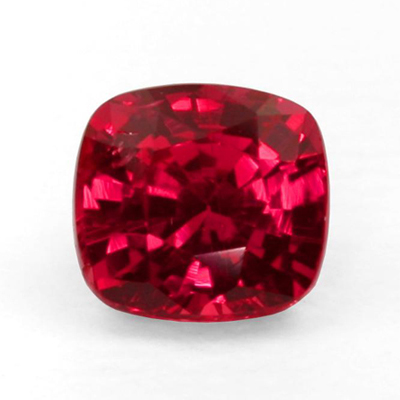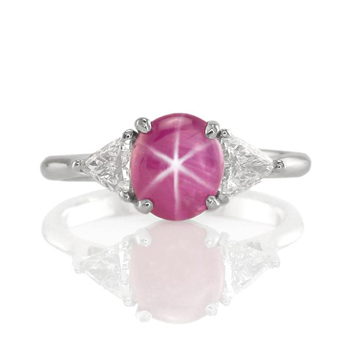Rubies Are Sapphires?
Wait, How Are Rubies And Sapphires Related?
Like sapphires, rubies are also members of the corundum mineral species. The different types of corundum can be categorized by color, optical phenomena (asterism, for example), internal features, and transparency. The distinguishing characteristic of a ruby is its red color.
Rubies receive their red color from high levels of the trace element chromium.While rubies are universally accepted as red corundum, the categorization of red gemstones, and thus rubies, can include shades of pink in some Asian markets. In European and North American markets, red and pink corundum is often delegated into two separate color categories. Pink corundum would fall under the pink sapphire category and red corundum, with medium to very dark red tones, would be categorized as ruby.
Natural and Untreated Rubies
Ruby was one of the first stones to be artificially created and there are many lab-grown rubies on the market today.
Synthetic rubies can be created through numerous laboratory processes including the pulling process, flux growth, flame fusion, and hydrothermal processes. Almost all of the rubies for sale today are described as “natural.” However, many of those stones have been treated or undergone chemical procedures meant to enhance their color or clarity. Rubies are most often treated to enhance their color and clarity to improve their sale ability. New treatments are constantly being developed to enhance low-grade rubies, and it is important for retailers and gem laboratories to keep up and accurately test for new enhancements. Gemologists can often decipher if a stone has been treated, but lab testing can be used for complete accuracy.Rubies and sapphires are only found in a few locations around the world. The most famous ruby sources are Myanmar (Burma) and Sri Lanka (Ceylon). Myanmar, formerly known as Burma, has been a key source of the highest quality rubies for centuries. The quintessential Burmese ruby has the perfect combination of intense color, silk, and strong fluorescence. Sri Lankan rubies tend to be more brilliant than rubies from other locations, and also tend to have higher clarity. However, they are typically lighter in color tone and contain pink or purple secondary colors.

Where Can Rubies Be Found?
Rubies and sapphires are only found in a few locations around the world. The most famous ruby sources are Myanmar (Burma) and Sri Lanka (Ceylon). Myanmar, formerly known as Burma, has been a key source of the highest quality rubies for centuries. The quintessential Burmese ruby has the perfect combination of intense color, silk, and strong fluorescence. Rubies from Myanmar are mainly found in two locations: the famous Mogôk Valley, and Möng Hsu. While exact dates are hard to come by, it is believed that the Mogôk Valley has been a source of rubies for almost a thousand years. The Möng Hsu area was only recently developed in the 1990s. In 2008 Congress passed an act that banned the importation of Burmese jade and ruby into the United States. Prices for Burmese rubies are at a premium as the number of stones for sale is limited to items imported before the act. Sri Lanka has a long history with gemstones and is a great source of sapphires, rubies, and other gemstones. The Etruscans, Greeks, and Romans coveted rubies and the Indians called Sri Lanka “Ratnadeepa,” meaning “Island of Gems.” Sri Lankan rubies tend to be more brilliant than rubies from other locations, and also tend to have higher clarity. However, they are typically lighter in color tone and contain pink or purple secondary colors. Other characteristics include a strong fluorescence, color zoning, and the presence of silk.
There are other factors that may also impact a ruby’s color. If the ruby can fluoresce, that attribute can intensify the stone’s color. Rutile needles, microscopic inclusions in the stone, can reflect light and also heighten the color in a ruby. Knowing the colors and varieties of the sapphire is helpful but if you want to know how to Judge Sapphire Quality so you can purchase with confidence, read out next section. Keep in mind that the tips for judging sapphire quality also applies to rubies.

